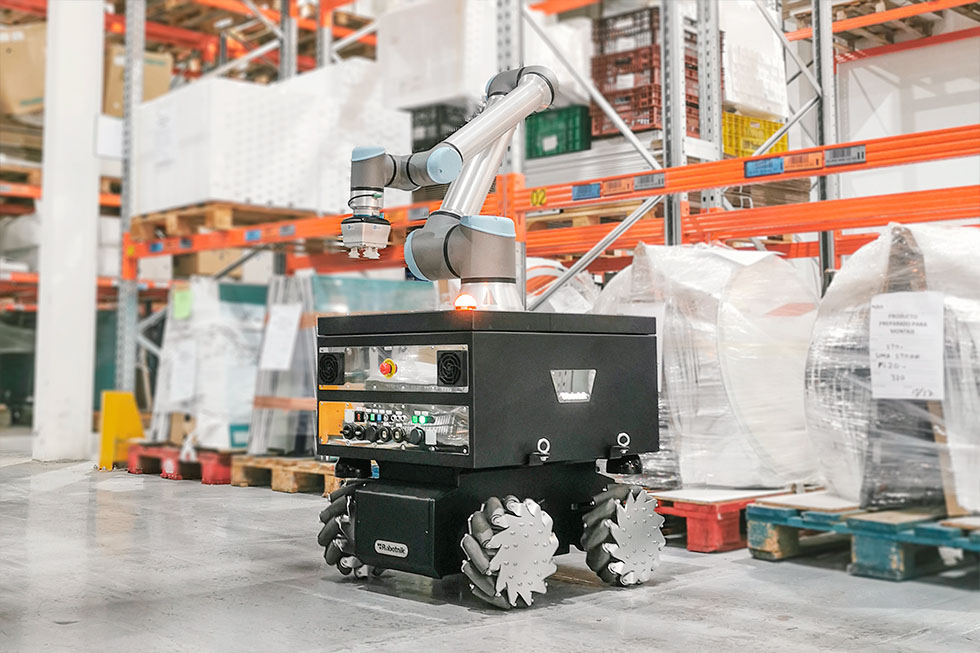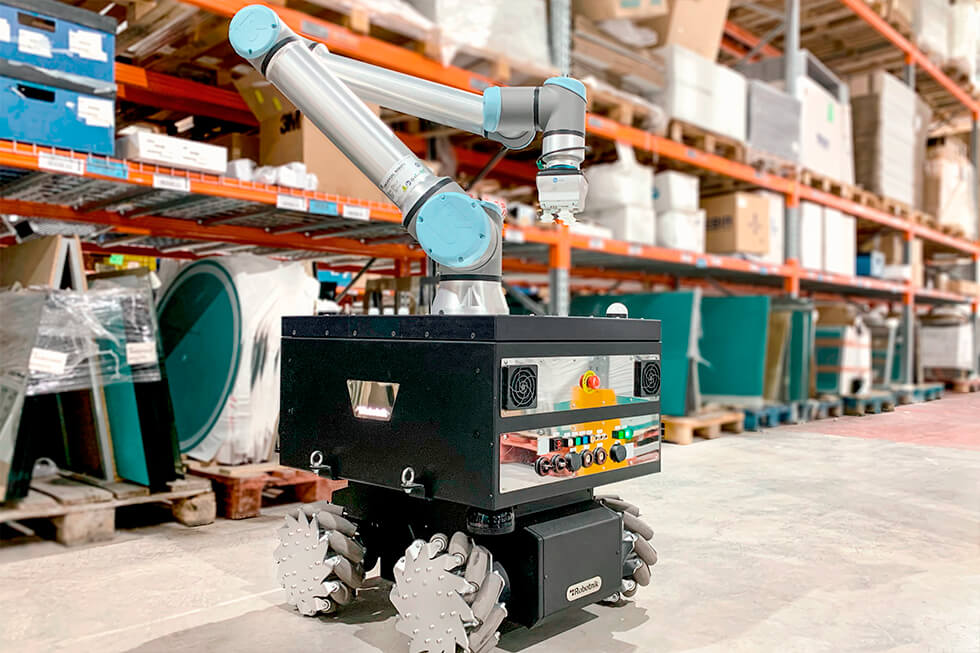
The aim of cobots in manufacturing is not to replace operators, but to optimise their work, ensure their safety and boost the efficiency of individual processes. In the following article you can read about the uses and advantages of cobots or collaborative robots in manufacturing industries.
This previous article was about the different uses of industrial robots in manufacturing and how they are a fundamental part of the manufacturing industries, especially for carrying out intensive industrial handling tasks.
However, these traditional industrial robots are limited when it comes to working closely with human teams as they represent a risk to their integrity and are often confined in cells or behind safety barriers. This is where cobots or collaborative robots come on board.
Cobots are a new generation of robots designed to work safely alongside people in industrial environments, becoming the ideal tool for automating processes in a manufacturing environment.
COLLABORATIVE ROBOTS IN MANUFACTURING
In contrast to the first industrial robots, cobots can work in close collaboration with humans with no physical barrier of separation. Collaborative robots are equipped with advanced location, navigation and safety sensors to ensure that there is no risk to workers.
Some of the most important advantages of using collaborative robots in the manufacturing industry are:
- Improved efficiency: cobots are able to work autonomously on repetitive and hazardous tasks, enabling workers to perform more complex and higher-value tasks. In addition, cobots can work consistently without fatigue or error, improving efficiency and reducing production times.
- Increased safety: By automating physically demanding tasks, cobots in manufacturing, reduce the risk of workplace accidents.
- Flexibility: Cobots are highly flexible and can be easily reprogrammed to perform different tasks depending on production needs. This allows companies to quickly adapt to changes in market demand and improve overall efficiency. One example of this is the RB-KAIROS+ collaborative mobile manipulator.
- Lower initial investment: Cobots are generally a more cost-effective alternative to traditional industrial robots as they do not require a specific infrastructure or complicated installation, allowing companies to improve efficiency and productivity without having to make such a large investment.
- Improved quality: Collaborative robots lead to improved product quality by reducing the possibility of errors and enhancing production accuracy. In addition, by working closely with human workers, cobots can help identify potential problems and fix them quickly.

NEXT STEP?
Therefore, the use of collaborative robots in manufacturing industries, are an aid to its competitiveness.
Here you can see use cases in which Robotnik’s collaborative mobile robots and manipulators are autonomously performing tasks such as inspection and quality control, material transport, Pick & Place or handling of components.
If you have any questions about how cobots can boost your industry, please contact our team.

